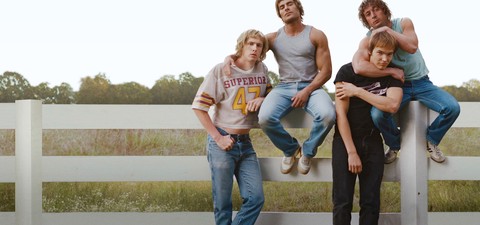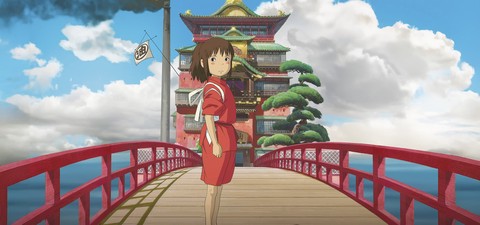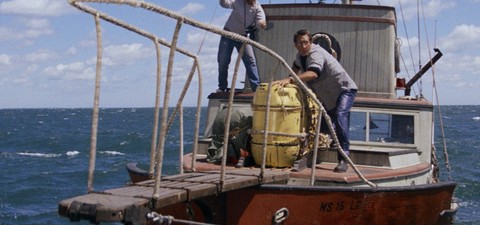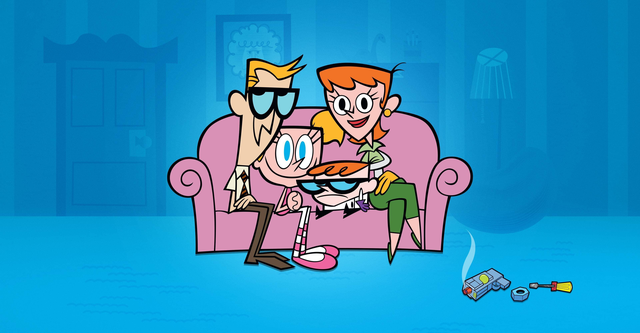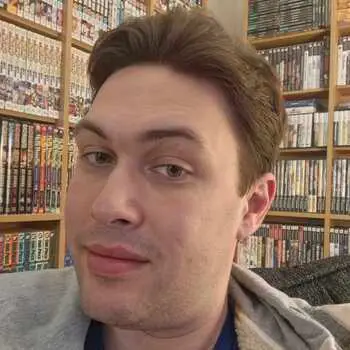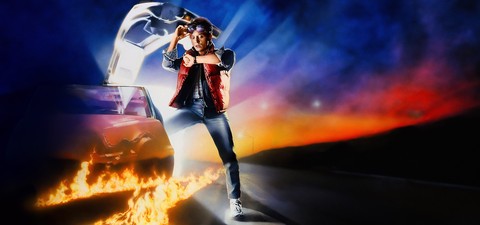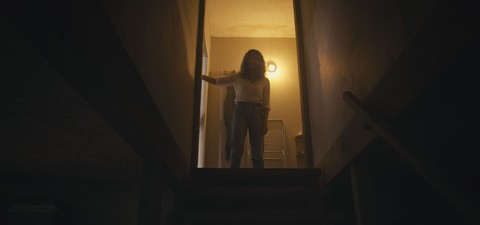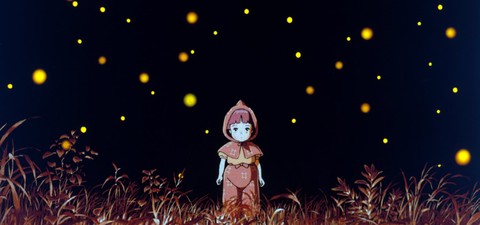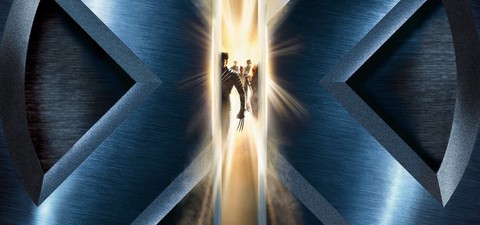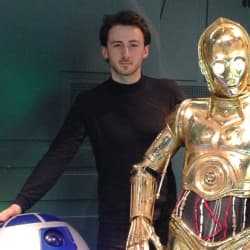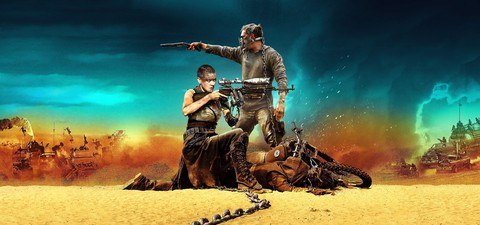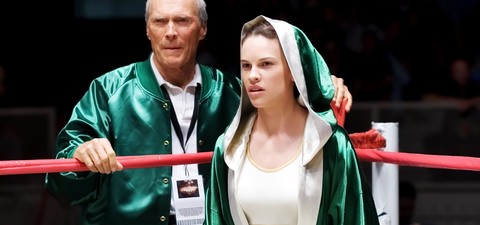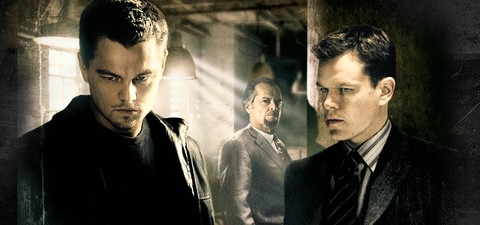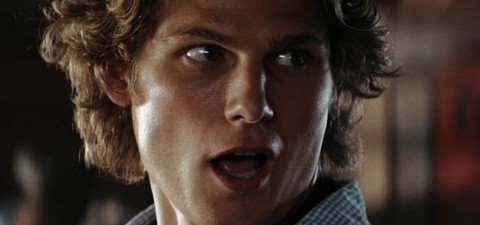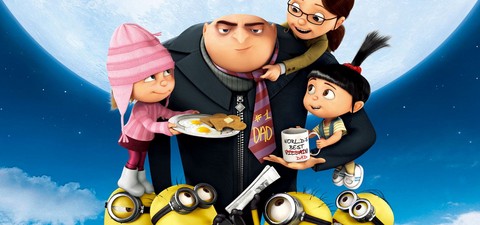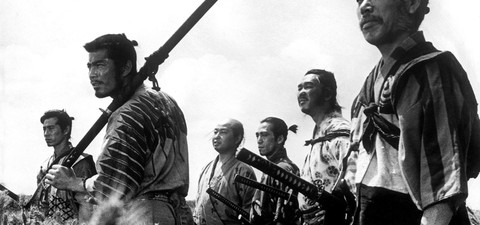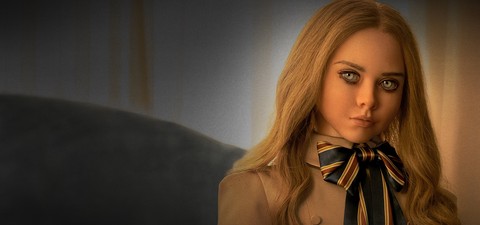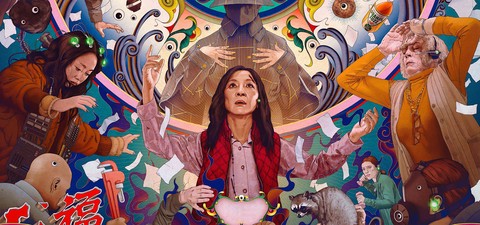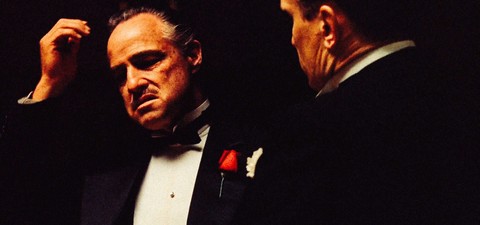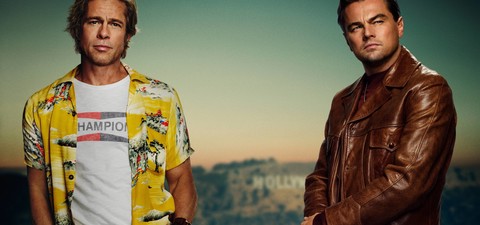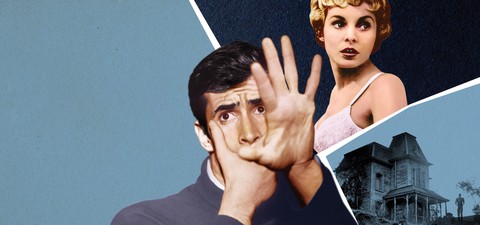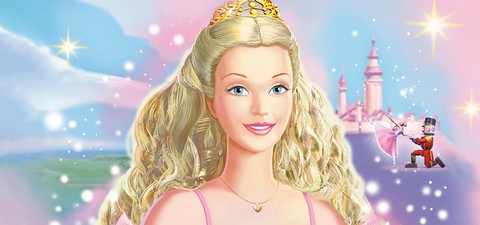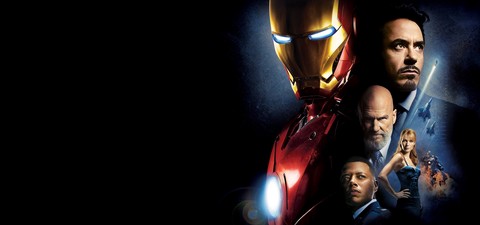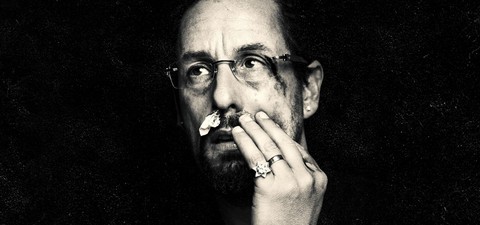The Harry Potter franchise has entertained generations of fans for decades. Based on J.K. Rowling's massively successful book series, the Wizarding World has grossed over $9.5 billion at the worldwide box office, which includes the eight main movies and three cinematic prequels. It is the third highest-grossing movie franchise of all time behind the Star Wars movies and Marvel Cinematic Universe (MCU). This guide shows you where you can watch all the Harry Potter movies in order on Prime Video, Netflix, Disney+ and more!
Daniel Radcliffe (Harry Potter) leads the franchise as the titular Boy Who Lived as he strives to defeat the evil Lord Voldemort while attending Hogwarts School of Witchcraft and Wizardry. Radcliffe appears in every movie from 2001-2011, alongside Emma Watson (Hermione Granger) and Rupert Grint (Ron Weasley). The cast also features some of Britain's most prolific actors, including Alan Rickman (Severus Snape), Maggie Smith (Professor McGonagall), Emma Thompson (Professor Trelawney), Ralph Fiennes (Lord Voldemort), Robbie Coltrane (Hagrid), and Gary Oldman (Sirius Black).
If you’d like to watch the Wizarding World in chronological order, you can do so beginning with Fantastic Beasts and Where to Find Them, leading up to the finale with Harry Potter and the Deathly Hallows: Part 2:
- Fantastic Beasts and Where to Find Them
- Fantastic Beasts: The Crimes of Grindelwald
- Fantastic Beasts: The Secrets of Dumbledore
- Harry Potter and the Philosopher's Stone
- Harry Potter and the Chamber of Secrets
- Harry Potter and the Prisoner of Azkaban
- Harry Potter and the Goblet of Fire
- Harry Potter and the Order of the Phoenix
- Harry Potter and the Half-Blood Prince
- Harry Potter and the Deathly Hallows: Part 1
- Harry Potter and the Deathly Hallows: Part 2
Although this order may be when the series is sequentially set, and you have the benefit of seeing a younger version of (arguably) the most powerful wizard of all time, it is definitely recommended to watch the franchise in theatrical release order to fully appreciate it. Initially meeting Dumbledore in his senior age makes his younger portrayal more meaningful; however, the true journey lies in following the iconic trio’s rise. This ultimately adds further depth to the prequels when they make a reference to the future saviours.
The Harry Potter series truly appeals to fans of any age. Its exploration of themes like good vs. evil and the power of friendship remains a riveting watch regardless of which stage of life the viewer is in.
Harry Potter and the Philosopher's Stone (2001)
Harry Potter and the Philosopher's Stone is the entry that kickstarted the entire Wizarding World franchise. Directed by Chris Columbus and released in 2001, the film follows Harry’s first year at Hogwarts School of Witchcraft and Wizardry where he learns that he is a wizard and begins his journey into the world of magic. Along the way, he befriends future lifelong companions, Ron Weasley and Hermione Granger.
Bursting with wonderment and magic (without getting too dark), Harry Potter and the Philosopher's Stone is a fantastic starting point for fans looking to get into the Wizarding World. It encourages viewers to hop onto their class-appointed broomsticks and soar straight into this whimsical saga.
The movie experienced major success at the box office, earning over $975 million worldwide (which has now reached $1 billion following its re-releases) and was a major hit with critics and fans alike. It went on to become the highest-grossing film of that year and was nominated for three Academy Awards, including Best Original Score, Best Art Direction and Best Costume Design.
Harry Potter and the Chamber of Secrets (2002)
Chris Columbus returned to helm the second entry in the series, Harry Potter and the Chamber of Secrets, a year later. During their second year at Hogwarts, Harry, Ron, and Hermione must destroy a terrifying monster unleashed by the Heir of Salazar Slytherin and stop it before the creature causes even more harm.
Doubling down on both magic and mayhem, Harry Potter and the Chamber of Secrets is a fantastic follow-up that takes the journey to new heights. From the boys’ ride along in a flying car to a ss-sensational dueling sequence, viewers get to experience the Wizarding World’s expanding wonders (and dangers) alongside the main crew.
Harry Potter and the Chamber of Secrets went on to experience similar successes with critics and fans alike, along with grossing over an impressive $878 million at the worldwide box office. It became the second highest-grossing film of 2002 behind another major fantasy sequel with The Lord of the Rings: The Two Towers.
Harry Potter and the Prisoner of Azkaban (2004)
Alfonso Cuarón stepped into the directorial chair with 2004’s Harry Potter and the Prisoner of Azkaban. This installment follows Harry’s third year at Hogwarts as he investigates his past. A key part of this quest involves learning the truth about Sirius Black (Gary Oldman), an escaped prisoner who has a mysterious link to Harry’s late parents. Michael Gambon was introduced to the franchise as the new Professor Albus Dumbledore following the passing of the original actor, Richard Harris.
Perfectly blending gothic charm with thrilling magic, Harry Potter and the Prisoner of Azkaban captures the Wizarding World at its most captivating. This is the entry where audiences learn that some profound truths hide behind the most dangerous threats, all while witnessing the young cast gradually come into their own.
Harry Potter and the Prisoner of Azkaban was a major box office hit, earning more than $808 million globally. It ended up becoming the second highest-grossing film of the year, right behind Shrek 2 and just ahead of Spider-Man 2. It also received two Academy Award nominations, including Best Original Score and Best Visual Effects.
Harry Potter and the Goblet of Fire (2005)
Mike Newell took over directing duties in 2005’s Harry Potter and the Goblet of Fire. The film focuses on Harry’s fourth year at Hogwarts as he finds himself unexpectedly selected to compete in the dangerous Triwizard Tournament after being chosen by the Goblet of Fire.
Harry Potter and the Goblet of Fire is known as being the franchise’s turning point, where a pivotal tragedy matures the series’ tone and ultimately permanently affects the crew. The narrative feels darker and the stakes get higher, forcing our young heroes to grow up fast. You truly feel like you are right there with them; being so connected to their journey that you cannot help but root for them every step of the way. Teens and adult audiences will start to feel more connected to these more mature narratives.
Similarly to the series’ previous installments, Harry Potter and the Goblet of Fire was a huge hit. It earned over $897 million at the global box office which ultimately made it the highest-grossing film of that year. It outperformed other major blockbusters, including Star Wars: Episode III - Revenge of the Sith and The Chronicles of Narnia: The Lion, the Witch and the Wardrobe. It also received an Academy Award nomination for Best Art Direction.
Harry Potter and the Order of the Phoenix (2007)
David Yates began his tenure as director with 2007’s Harry Potter and the Order of the Phoenix, a role he would continue for all subsequent films in the franchise. The movie focuses on Harry’s challenging fifth year at Hogwarts, where he struggles with widespread denial of his confrontation with Lord Voldemort.
The now-young adult cast truly shines in Harry Potter and the Order of the Phoenix, brilliantly portraying their journey from adolescent frustration to fierce rebellion. Its powerful exploration of how tyranny can wear a respectable mask makes it a timeless watch that feels more and more relatable as the years go on.
While its critical reception saw a slight dip (with a 78% Rotten Tomatoes score falling just short of the previous films’ scores of at least 80%), Harry Potter and the Order of the Phoenix was a massive box office hit. It earned a whopping $942 million globally which ultimately made it the second highest-grossing film of that year, finishing only behind Pirates of the Caribbean: At World’s End.
Harry Potter and the Half-Blood Prince (2009)
Harry Potter and the Half-Blood Prince released in 2009 and marked the sixth installment in the series. This chapter follows Harry’s sixth year at Hogwarts where he experiences some major milestones, including falling in love, acquiring a mysterious potions book, and working to uncover a vital memory crucial to defeating Voldemort.
Harry Potter and the Half-Blood Prince throws you into the Wizarding World where danger is gradually reaching an all-time high. This entry effectively balances the chaos of young love against the terrifying knowledge that one young man’s fate is tied to everyone’s survival. Every person involved in this film operates at their peak, making every moment feel urgent and significant as the beloved franchise is racing toward its finale.
The critical approval rebounded for Harry Potter and the Half-Blood Prince, earning an 83% score on Rotten Tomatoes. It was also the most expensive production in the entire franchise, with a reported budget of $250 million. It went on to earn a colossal $941 million at the worldwide box office, making it the second highest-grossing film of that year. The title that outperformed it just so happens to be the most financially successful film of all time, James Cameron’s Avatar. This entry also earned an Academy Award nomination for Best Cinematography.
Harry Potter and the Deathly Hallows: Part 1 (2010)
The epic series approached its conclusion with Harry Potter and the Deathly Hallows: Part 1 in 2010. This penultimate chapter follows Harry, Ron, and Hermione as they abandon Hogwarts to fulfill Dumbledore’s final request: a dangerous mission to locate and destroy Voldemort’s Horcruxes. The anticipation felt for these final movies was palpable, capping off a decade-long journey for its diehard global audience.
Harry Potter and the Deathly Hallows: Part 1 is a thrilling road-trip-from-hell chapter that showcases this franchise’s immense power. We get the trio’s best acting in these final two entries as they face Voldemort’s sheer capacity for terror. It builds tension through a deeply personal story, leveraging our extensive connection to these characters that make every victory a triumph and every loss devastating. This perfect setup makes the epic final battle in Part 2 incredibly satisfying, especially for those who enjoy darker, almost horror-adjacent projects. .
While Harry Potter and the Deathly Hallows: Part 1 received the series’ lowest Rotten Tomatoes score at 76% (not including the Fantastic Beasts movies), this did not diminish its huge financial success. The film was a major box office hit, earning over $960 million globally. This impressive total made it the third highest-grossing film of that year, finishing behind Toy Story 3 and Alice in Wonderland. It also received two Academy Award nominations for Best Visual Effects and Best Art Direction.
Harry Potter and the Deathly Hallows: Part 2 (2011)
The Harry Potter film series reached its end with 2011’s Harry Potter and the Deathly Hallows: Part 2. This final chapter completes Harry’s arduous mission to locate and destroy Voldemort’s remaining Horcruxes, leading to their final battle.
Harry Potter and the Deathly Hallows: Part 2 is the perfect finale, an epic and emotional thrill ride where every hero gets a moment to shine. (You go, Neville Longbottom!) It seamlessly blends massive battle sequences with quiet, intimate moments that reward us for a decade of loyalty. With the stakes at their absolute peak, Part 2 delivers the cathartic closure we all craved, making for a spectacularly satisfying farewell to the Wizarding World.
This entry is unsurprisingly the most critically and financially successful installment in the entire franchise. Harry Potter and the Deathly Hallows: Part 2 is the most acclaimed by critics, achieving a remarkable 96% rating on Rotten Tomatoes, while its box office earnings surpass a whopping $1.3 billion globally. The film received three Academy Award nominations for Best Art Direction, Best Makeup, and Best Visual Effects. It was also honored by the National Board of Review, which listed it among that year’s 10 best films. The next story set in the Wizarding World would not be released for another five years.
Fantastic Beasts and Where to Find Them (2016)
David Yates returned to the Wizarding World in 2016 with Fantastic Beasts and Where to Find Them, a project he would continue with its two sequels. This first entry serves as both a prequel and spin-off to the Harry Potter film series, which is based on the guidebook of the same name. The film is set in 1920s New York and follows wizard-magizoologist Newt Scamander (Eddie Redmayne). His global mission to study and protect magical creatures is disrupted by a mysterious force causing chaos across the city which risks revealing the secret world of wizards to the Muggles.
Fantastic Beasts and Where to Find Them is certainly not a bad movie. It features a fantastic performance from Redmayne (who won the Academy Award for Best Actor the year prior) and includes everything any Wizarding World fan would be giddy to see! While it ultimately lacks the heart found in previous Wizarding World entries, its set and costume designs are undeniably magnificent to see on the big screen.
With a 74% rating, this first installment holds the best critical reception of the Fantastic Beasts series on Rotten Tomatoes. It was also a major financial success, earning over $814 million globally. It won the Academy Award for Best Costume Design, making it the first film in the entire Wizarding World film franchise to receive an Oscar.
Fantastic Beasts: The Crimes of Grindelwald (2018)
Fantastic Beasts: The Crimes of Grindelwald released two years later. This installment introduced a younger version of the beloved character Albus Dumbledore, with Jude Law taking on the role. The story continues to follow Newt who is now recruited by Dumbledore. They ultimately work together to confront the rising power of dark wizard Gellert Grindelwald (Johnny Depp). Their mission unfolds against a backdrop of division within the wizarding community. This sequel signaled a downturn for the series, both critically and financially.
Despite a continued stellar performance from Redmayne and the addition of Jude Law who portrayed an excellent Dumbledore, Fantastic Beasts: The Crimes of Grindelwald ultimately falls flat. Its intriguing time period and grandiose set pieces unfortunately cannot save this entry that you can truly skip altogether.
Fantastic Beasts: The Crimes of Grindelwald received the lowest Rotten Tomatoes score in the whole Wizarding World franchise, at 36%. It went on to earn $654 million at the worldwide box office and became the tenth highest-grossing film of that year.
Fantastic Beasts: The Secrets of Dumbledore (2022)
Fantastic Beasts: The Secrets of Dumbledore released in 2022 and served as the third and final chapter in the Fantastic Beasts series. It is also the eleventh film in the Wizarding World franchise. Set several years after the previous entry, the film focuses on a mission assigned by Dumbledore who enlists Newt and a team of allies to infiltrate the growing ranks of Grindelwald’s darkly sinister forces. This installment saw Mads Mikkelsen replacing Johnny Depp in the role of Grindelwald.
You can never go wrong with adding Mads Mikkelsen to any project—be it an independent wonder or a big blockbuster. This film is a definite improvement from The Crimes of Grindelwald despite it also being a Wizarding World chapter you can skip. Although, if you do feel a connection to Redmayne’s Newt Scamander and/or Law as Dumbledore, I would recommend still watching if you want a touching conclusion to their stories.
The critical reception for Fantastic Beasts: The Secrets of Dumbledore was an improvement over its predecessor, earning a 46% rating on Rotten Tomatoes, although reviews remained mixed. It ultimately became the lowest-grossing entry in the Wizarding World after earning $407 million at the worldwide box office.


